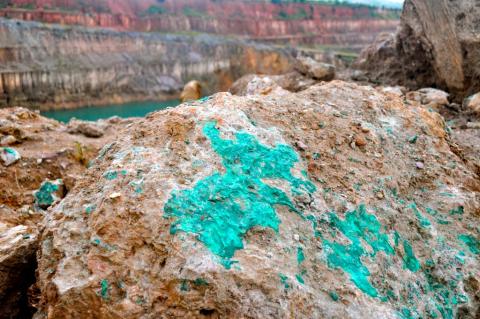
How can the EITI be more effective in fighting corruption?
How can the EITI be more effective in fighting corruption?
With more than USD 2.5 trillion of revenues disclosed to date, the time is right for the EITI to reflect on its contributions and potential future role in the fight against corruption in the oil, gas and mining sector.
The question about what tangible impact transparency has on anti-corruption efforts has been debated over and over, with numerous studies pointing to different results. The issue is further compounded by the increasingly sophisticated forms of corruption that take place.
In the extractive industry, arguments range from pointing out that transparency is only one of many policy options and that alone it is not an effective anti-corruption strategy. Within extractives transparency circles the question often gets asked: How can countries with allegations of corruption in the extractive sector, nevertheless perform well in implementation of the EITI’s global transparency standard? (The recent allegations related to corruption in Senegal’s oil industry is the latest case demonstrating that such questions are still relevant).
There is a clear need to capture the EITI’s strengths and contribution, understand its limitations and consider ways to ensure that EITI can better support anti-corruption agendas in the oil, gas and mining sectors.
To achieve this, we are working with anti-corruption expert Alexandra Gillies who has prepared a paper to help kick off the discussion.
What the EITI does do
Based on experiences with EITI implementation to date, EITI reporting and multi-stakeholder processes. The EITI:
Shines a light in (many of) the right places. The EITI transparency requirements focus on key aspects along the value chain where corruption risks are most prominent. This includes licensing and contracts, beneficial ownership of companies, state-owned enterprises, financial flows and revenue collection, and commodity sales. Subcontracting in the extractive sector and intermediaries contracted to facilitate access business opportunities in resource-rich countries are flagged as high-risk areas that are currently not covered by the EITI Standard, although some EITI countries have decided to extend their disclosures to these areas (example here from Guinea).
Exposes natural resource management processes and practices vulnerable to abuse, and suspicious deals and transactions. Identifying governance practices that are susceptible to corruption is one of the most valuable and unique contributions that the EITI makes in fighting corruption. There are also numerous examples of how EITI data, in combination with other sources of information has helped explore suspicious deals and transactions and been a starting point for further investigations. However, as is pointed out in the paper, EITI reporting is neither forensic nor unpredictable enough to expose most instances of corruption.
Advances global norms related to anti-corruption. Progress made by the EITI spills over into other international anti-corruption efforts. For instance, the requirements on beneficial ownership reporting in the extractive sector have informed wider debates on establishing public ownership registers covering all sectors in countries such as Ghana, Indonesia, Nigeria and Ukraine.
Provides a platform for discussion, monitoring and civil society advocacy. When EITI Reports reveal concerns related to corruption, such as those mentioned above, the EITI multi-stakeholder groups in each country is a place where stakeholders with varying interests can discuss possible remedies, pressure the relevant agency or company to respond, and monitor progress. It encourages inter-agency coordination and active participation by civil society.
What the EITI does not do
Despite its contributions, there is also a number of limitations, including:
EITI members don’t include some of the countries that struggle with oil, gas and mining sector corruption. While the EITI does help strengthen global transparency norms, its potential to address corruption remains strongest in its member countries, while non-implementing countries that could also benefit from joining the EITI include Angola, Brazil, Equatorial Guinea, South Sudan and Venezuela.
Many corrupt activities fall outside the EITI’s scope. In many resource rich countries, corruption reaches across and beyond the extractive sector and into areas such as public procurement, and also involves actors across multiple jurisdictions.
Allegations of corruption arise involving EITI countries and supporters. Corruption have arisen within the ranks of EITI members. As is the case for governments and companies worldwide, EITI members have struggled with corruption risks in the extractives sector.
Predictable transparency can be skirted by corrupt actors. The EITI helps build a sustainable and systematic form of transparency, where domestic institutions regularly disclose a wide set of information about the sector. This is one of the initiative’s strengths. But it means that EITI reporting is very different than the kinds of unpredictable leaks, subpoenas or office raids that often expose dirty deals
Genuine political will to fight corruption is not guaranteed. EITI implementation cannot in itself prevent corruption. The potential contribution relies on effectiveness of wider anti-corruption campaigns. The possibility of EITI members or supporters using the EITI as a way of improving a reputation (whitewashing) and limited engagement with some anti-corruption actors at the implementing country level further adds to this challenge.
What more could the EITI do?
That’s what we want your views on. The discussion paper outlines a set of ideas for how the EITI and other stakeholders can address the limitations and strengthen its contribution to the fight against corruption. These include clearer communication about what the EITI can and cannot do, further strengthening disclosures that can expose corruption risks and practices, work more closely with stakeholders and partners in analyzing and following up on results of disclosures, and convene new interactions among anti-corruption actors.
The deadline for comments has now passed. More information is available here, and the full paper is accessible here.
Related content



